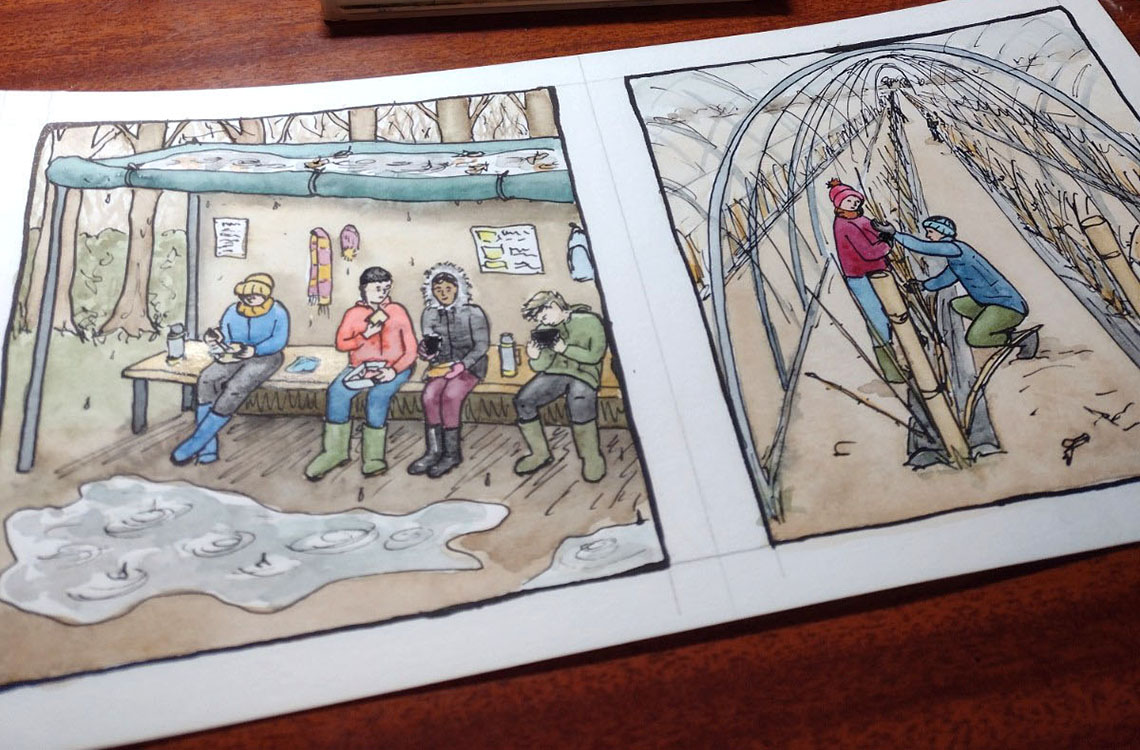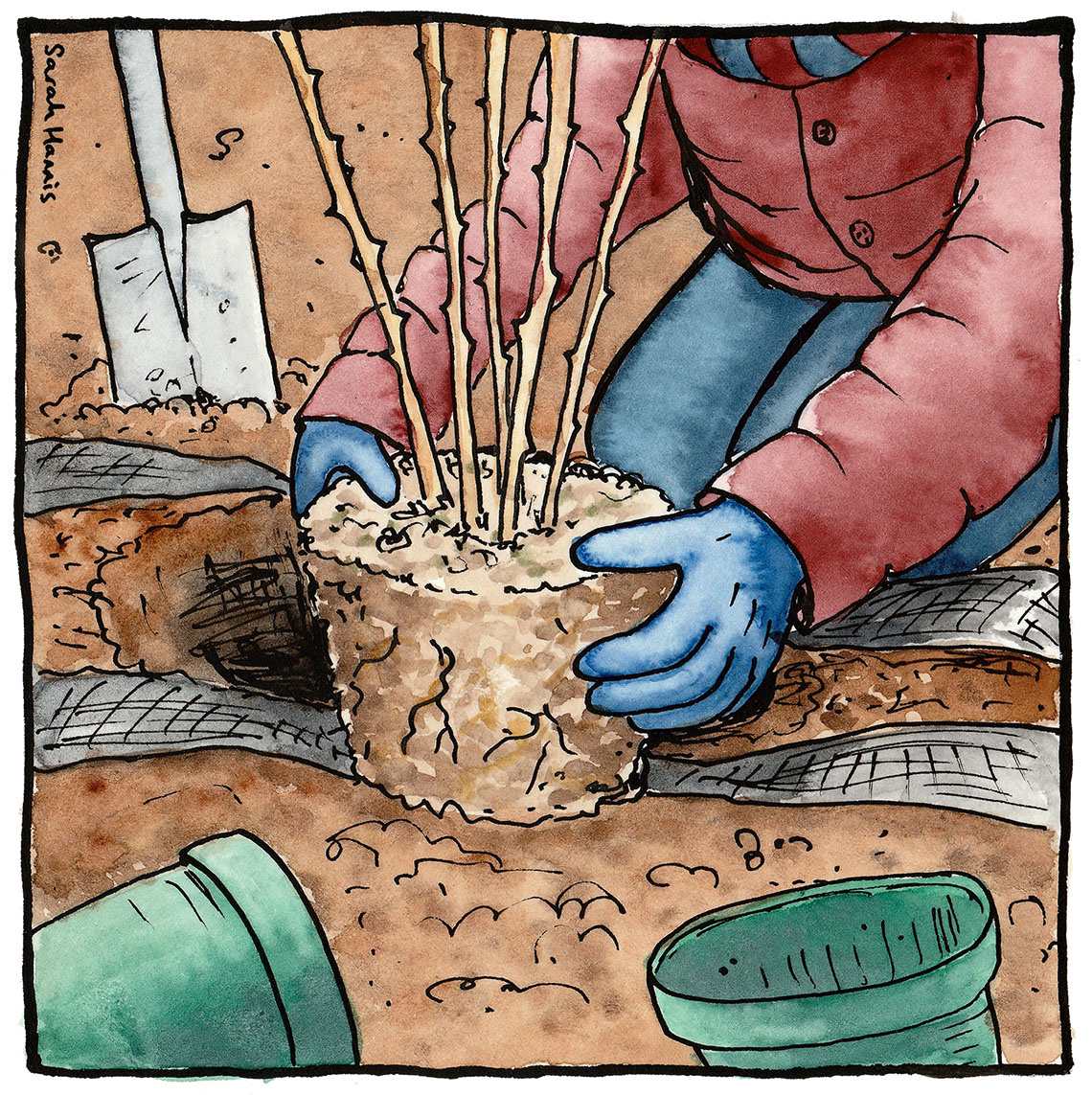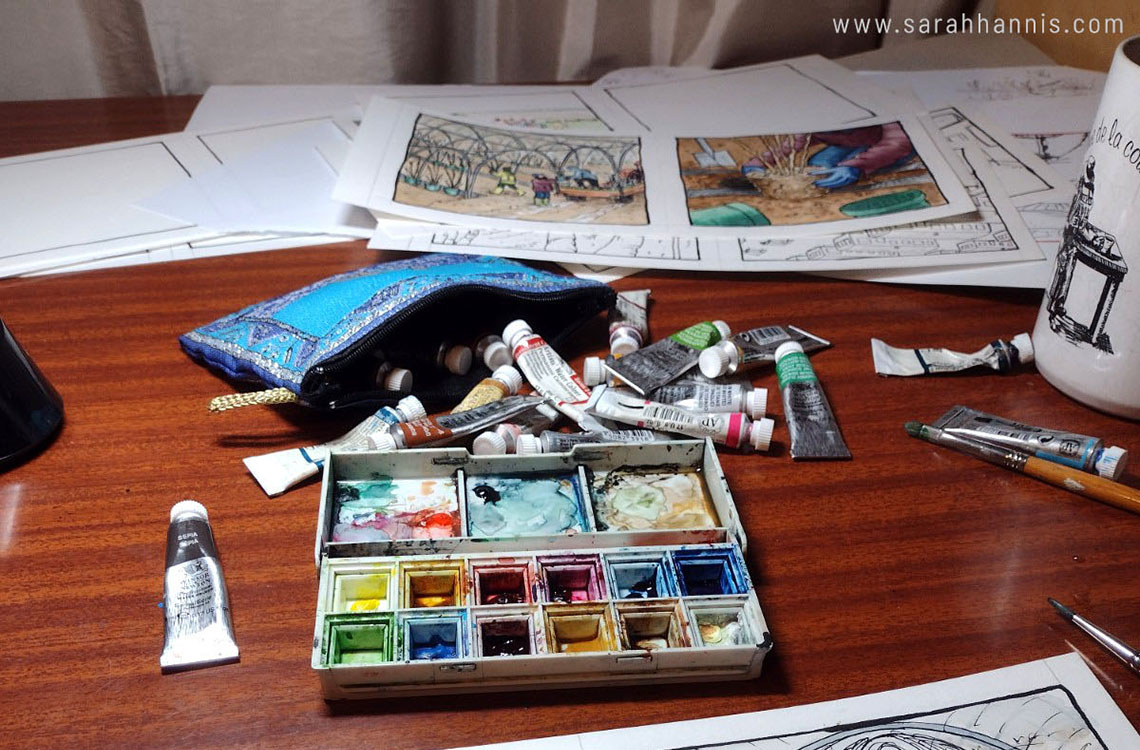Feeding the Nation: the lives of seasonal migrant workers
Written by Bethany Robertson, Roxana Barbulescu, and Carlos Vargas-Silva.
How much do we care for the people who care for our food?
In this blog, learn about research by the Feeding the Nation project into the experiences of the seasonal migrant farm workers in the UK who tend our fields, care for our crops, and harvest our food. Learn more in a series of online exhibitions curated by the Feeding the Nation team: Migrant Workers: the Raspberry Planter and Migrant Workers: Summer on a Strawberry Farm.

Why do seasonal workers’ voices matter?
Food security is increasingly at the forefront of our minds, and ever more so since Brexit, COVID-19, and the war in Ukraine. These disruptions have highlighted farming as essential work to help feed the nation. However, what is lesser known is the community of migrants who arrive in the UK on a seasonal basis to plant, pick, and pack fresh fruit and vegetables. The number of migrant workers in UK horticulture was estimated at 75,000 in 2018, with 90% being overseas workers and large numbers from Ukraine in recent years.
As part of a recent UKRI project Feeding the Nation, which brings together social scientists from the University of Leeds and COMPAS at the University of Oxford, we have developed an interactive dashboard to show the historical and recent trends in seasonal migration in UK farming.
As you may have seen from The MERL’s ongoing series of blogs charting Changing Perspectives in the Countryside, many voices have gone unheard under the guise of rural spaces that are seen as homogenous. Our new online exhibition, and the research project it is based on, serves to make labour migration in the UK countryside visible.
Beyond the idea of a static rural community, seasonal migrant farm workers come and go each year, contributing to our food system and rural economies. They are hard to reach yet economically important, as farmers depend on seasonal labour from overseas to process crops and fulfil retail orders. In turn, this keeps local people employed elsewhere in the business and ensures that farms can thrive for future generations.
Following Brexit, farms cannot recruit as easily as they did under the Freedom of Movement. A number of alternatives to migrant labour in farming have been identified, but migrants continue to make up the fabric of seasonal rhythms in the countryside due to the difficulties of recruiting workers from the UK for temporary work in rural locations and automated technology being early in development. Labour shortages have drawn attention to working conditions, and we spoke to farmers and seasonal farm workers to find out about their experiences of post-Brexit immigration, work priorities, and mobilities.

Voices of seasonal workers from the research
Seasonal migrant workers often aim to return here annually to support their families. The majority support children in further education in their home countries, saving during the six months they work in seasonal agriculture for advance payments on their homes, buying a car, or starting a business. For the younger workers, financing their own education is a personal goal, whilst the older seasonal workers who work in farming at home often use the savings to expand their farms. Seasonal migrant workers can arrive by applying for a visa that bears the name ‘Seasonal worker visa’ or can be domiciliated migrants who tend to be from the EU countries and have settled or pre-settled status. With different associated rights, their experiences vary significantly, affecting how long they can stay and if they can return the following year for the same work.
Migrant farm workers tend to live in static caravans for the duration of the season. Strong bonds develop between the occupiers who cook, do groceries together, and often work on the same team in the field. Workers know little or no English, particularly those who come for the first time, so finding friends to share the experience with or lean on in difficult times is vital for pulling through the season. There are also negative experiences, with workers reporting being maltreated or shouted at by field supervisors and row inspectors. They often speak with pride of their work. What is most difficult however is being away from families and friends and feeling isolated because of the remote location of the farms. Internet and phones are a connection to their loved ones and their known world, as well as their main source of entertainment. Whilst their presence is transient, with this online exhibition we aim to put the spotlight on their lives as part of rural communities.
Whilst the majority of seasonal workers arrive in May or June for harvest, a smaller number arrive in the UK all year round as they contribute to a variety of jobs on the farm. In the winter and early-spring months, migrant workers care for raspberry canes, planting, keeping the canes in good condition, replacing frames, pruning the canes, and protecting them from birds in rain, wind, or hail. Raspberries are fragile to harvest and require individual hand picking and continued delicate care in packing and transporting as they make their way to our pastry chefs, ice cream makers, and the tables of thousands of families across the UK. Why not rediscover British raspberries and explore new things to do with them?

Explore a day in their life in the online exhibition
The research team have collaborated with artist Sarah Hannis to produce a series of illustrations based on encounters with participants in their investigations and on photographs taken by migrant workers themselves. Working with our friends at The MERL, we are pleased to be able to share these illustrations and the stories they tell through a new online exhibition, which takes you through a day in the life of migrants who are living in the UK for seasonal farm work.
View the online exhibitions: Migrant Workers: the Raspberry Planter and Migrant Workers: Summer on a Strawberry Farm.


One thought on “Feeding the Nation: the lives of seasonal migrant workers”